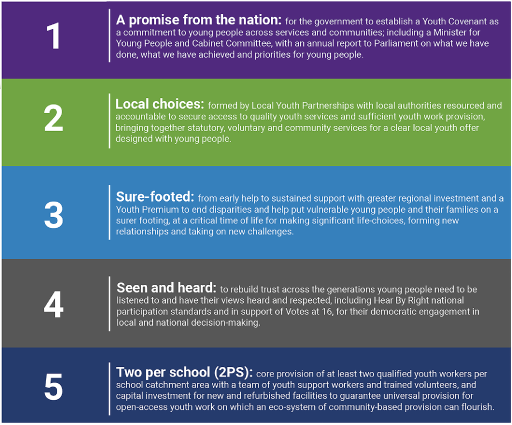2 Why comprehensive, universal and socially engaging?
The second of the four principles that underpin youth justice with integrity is ‘comprehensiveness, universality and social engagement’. Comprehensive, universal and engaging services are based on the belief that people are entitled to decent living standards regardless of the circumstances into which they are born and without the need to undergo assessment.
Services that support young people need to be comprehensive, universal and engaging because the lesson of history throughout the nineteenth and twentieth centuries is that the alternatives – selective and means-tested support – exclude those deemed undeserving or unworthy (Goldson and Muncie, 2008; Muncie, 2014).
Making divisions between the ‘deserving’ and ‘undeserving’ poor has been a recurring feature of government policy toward families living in poverty throughout the nineteenth and twentieth centuries. Deciding who is deserving and who is not requires the establishment of elaborate qualifying and disqualifying criteria and a mechanism for testing those criteria. These become costly, demeaning and divisive. Resentment, conflict and distress are the outcomes (Hopkins Burke, 2016).
Holistic, universal services that meet the needs of all children in society, safeguard their interests and promote the wellbeing of all young people builds social belonging, solidarity and co-dependence. Families and children need good social infrastructure in order to thrive and these should include leisure and recreational facilities for young people, adequate health and education services, decent schools with stimulating, diverse and flexible curricula, proper training and good job opportunities. Resourcing generic youth support around these services is an effective way of preventing the escalation of socially and personally destructive behaviour, such as crime (Montgomery and Robb, 2018).
Activity 2 A promise to be kept, a promise to be made?
The National Youth Agency launched a manifesto in 2019 featuring five elements they see as crucial to creating new hope and possibilities for young people.
1. Take a look at the description of the five elements of the manifesto in Figure 3.
2. Now read the more extensive account of Item 1 that explains why ‘a promise from the nation’ is proposed:
High 5 full manifesto [Tip: hold Ctrl and click a link to open it in a new tab. (Hide tip)]
3. Once you have read the account of Item 1, complete the statement and answer the question below according to the proposal outlined in the manifesto.
Discussion
As the cultural critic Raymond Williams (1983, p. 8) points out ‘manifestos are among the most unread writing of our time’, which is a pity. Youth services in the UK have been hit hard by the austerity policies of governments since 2010. Young people face difficult times and an uncertain future with little evidence of government attention to their needs. The NYA manifesto sets out a remedy that would be consistent with the second principle that services for young people should be comprehensive, universal and socially engaging. As the urgency of making changes to our systems of provision to young people rises and becomes more obvious, manifestos such as the one produced by the NYA may become more widely read.
The next principle you will explore is based on the understanding that, despite good intentions, formal youth justice procedures frequently accelerate and intensify problematic behaviour. As a result, diversion from prosecution and criminal justice agencies are to be recommended.

